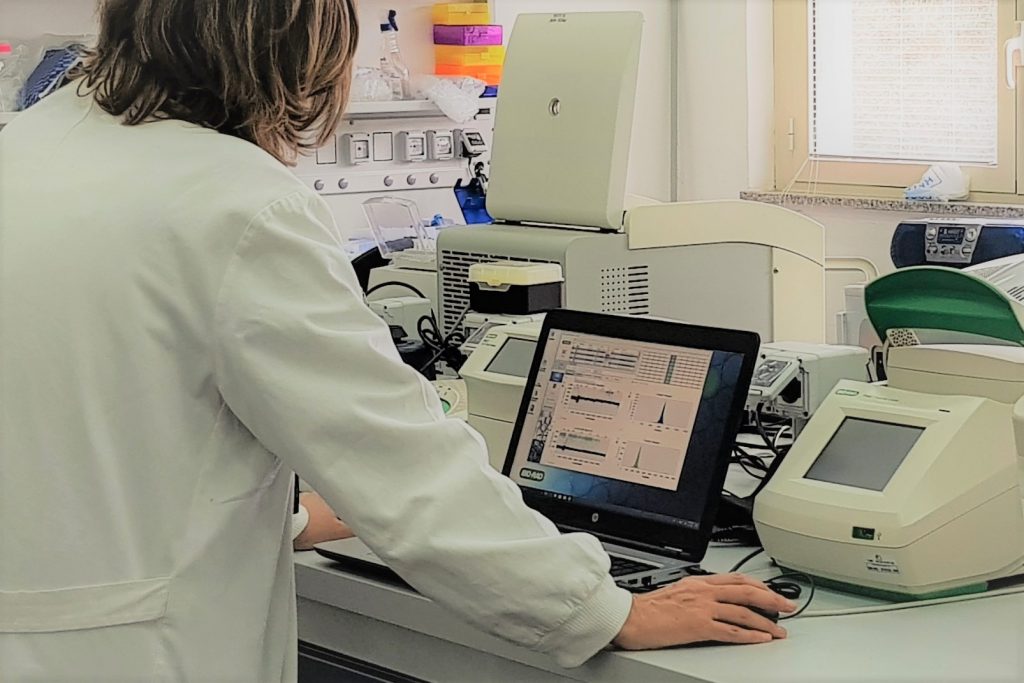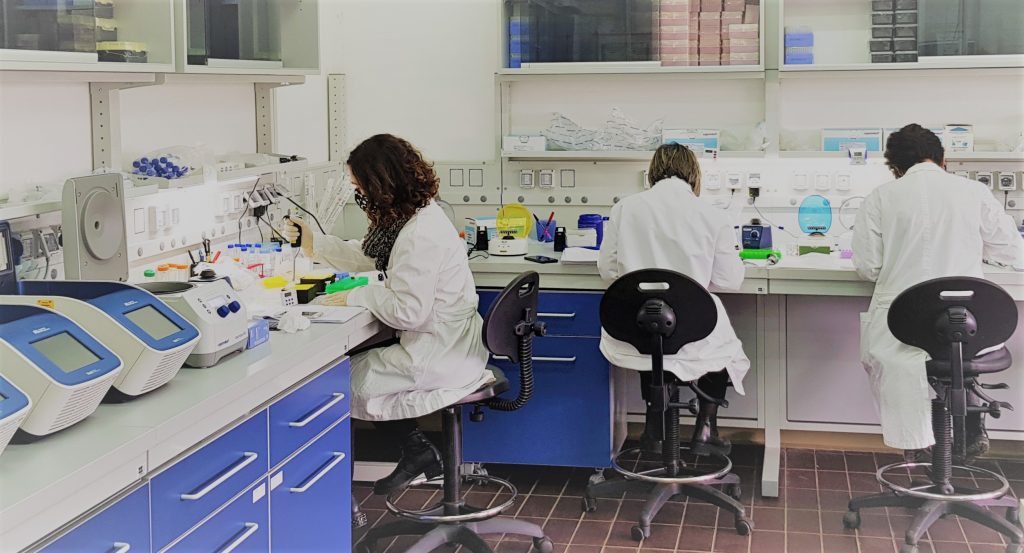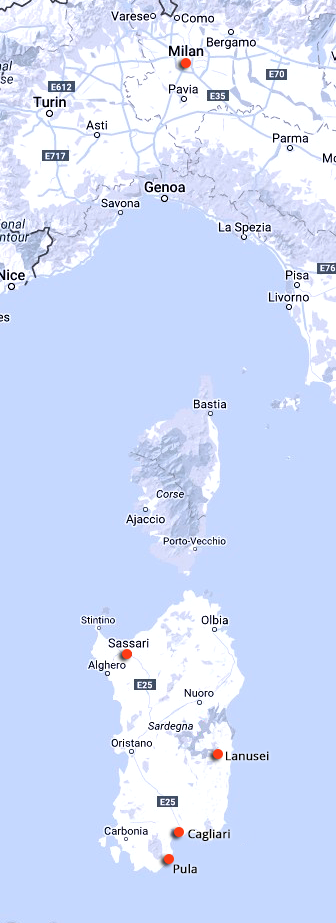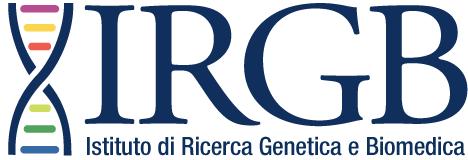About Us
The National Research Council (CNR) Institute for Genetic and Biomedical Research (IRGB) has the goal of understanding the causes and the mechanisms underlying diseases with a genetic component, both with simple or complex modes of inheritance.
The IRGB has a long-standing experience in elucidating genetic and epigenetic factors at the base of common diseases. The institute’s primary efforts are carried out through a number of projects performed by different groups operating in different sites in Sardinia (Monserrato, Lanusei, Sassari and Pula) and in Milan.
Among the projects being performed in Sardinia, five (the ProgeNIA/SardiNIA Study; the Autoimmunity Study; the Sardinian Genome Project, the Sardinian Transcriptome Project and the Immune Deployment Project), are highlighted here.
These projects boil down to the analysis of the consequences of genetic variation – up to the sequence of the whole genome – on phenotypes of biomedical relevance, with subsequent follow-up targeted functional studies both in vitro and in vivo in appropriate animal models. Particular emphasis is given to analysis of the structure of the study populations and to the joint analysis of discrete traits (diseases) and continuous quantitative traits (or endophenotypes) related to the diseases of primary interest and examined in large cohorts of thousands of individuals.
The Sassari unit of the IRGB is focused on both basic and translational research activities in Oncology. The main scientific aim is to study molecular mechanisms involved in the neoplastic transformation and progression as well as their correlations with pathological and clinical features in cancer patients. The research team, constituting the Sassari Cancer Genetics Unit of CNR, is fully involved in research projects focusing on precision medicine applied to medical oncology and clinical practice. One goal is to develop and characterize new molecular markers useful to either predict therapeutic response/resistance against innovative biologic treatments (targeted therapies and immuno-oncology) either assess the clinical outcome and the prognosis, for improving the management of cancer patients.
The Milan unit of the IRGB pursues two main topics: immunological and cardiovascular diseases. The major approaches are HT DNA sequencing in the setting of rare diseases, stem cells as in vitro models, including iPS cells generation, signal transduction, epigenetics and non-coding RNAs analysis in the molecular pathophysiology of immunological and cardiovascular diseases. The unit is located within the campus of the Humanitas Research Hospital with which it shares a number of state of the art facilities. The activity of the cardiovascular research team covers a wide range of subjects, including the genetics of complex and monogenic cardiac diseases, the molecular mechanisms of myocardial contractility in normal and pathological conditions, epigenetics of cardiovascular development and physiopathology, mechanisms underlying cardiac fibrosis, stem-cell and nanotechnology applications, with the ultimate goal to find better cures for patients suffering from cardiovascular diseases.
Research focused on the immune system includes the role of host-microbiota interactions in the pathogenesis of immune-mediated diseases and the role of oxidative stress in cancer development and progression. The Pathogenesis and Treatment of Immune and Bone Diseases Laboratory, located at San Raffaele Telethon Institute for Gene Therapy (SR-Tiget) in Milan, studies the pathophysiology of autoimmunity in primary immunodeficiency, and develops and tests novel therapeutic approaches, including gene editing (mediated by CRISPR-Cas9/ZFN nucleases) and gene therapy (mediated by lentiviral vectors).
Other lines of research include bone pathophysiology and osteoimmunological networks, hematopoietic stem cells in health and disease, regenerative medicine, iPSC technology and new therapies for structural chromosomal disorders.
Elucidating the molecular mechanisms of a) aging and aging-related diseases, b) syndromic human developmental disorders characterized by genome instability and c) cancer development are further research topics at the IRGB.




Geographic locations
The main Institute of Genetics and Biomedical Research (IRGB) of the CNR has three locations in Sardinia. The four Sardinian sites are located in Cagliari, Lanusei, Pula and Sassari have been built based on the main research activities and future plans of the Institute and are organized to ensure an efficient and integrated distribution of the work.
The Cagliari is the main site of the Institute. Located within the University of Cagliari Campus (Cittadella Universitaria di Monserrato), the building covers an area of ~1000 mq and includes the administration of the Institite and four large laboratories well equipped to carry out molecular and cell biology studies, in addition to a mouse facility co-hosted with the University. The research team includes 24 researchers and 10 technicians who carry out in-vivo, ex-vivo and in vitro studies for identification of mechanisms underlying monogenic and complex disorders, with a special focus on hemoglobinopathies and autoimmune diseases. Several cutting-edge laboratory techniques are in place, such as genome editing through CRISPR, Hi-C, and generation of knock-in/knock-out mice. Finally, the team includes a group of six statisticians and bioinformaticians who carry out computational analyses for all the ongoing projects.
In the Lanusei we run the SardiNIA project, a longitudinal study of 6000 volunteers enrolled from 4 nearby villages. The personnel include a recruitment coordinator who contacts the participants, 6 physicians and 4 nurses who perform medical examinations and take samples, 14 biologists who conduct genetic and functional analysis and one bioinformatician who manages the data. This site includes a medical clinic for the visits and sample collection, and five laboratories with more than 14 locations and large instruments (including 2 Affymetrix 7G GeneChip systems and 2 FACS Excalibur Canto 2 Becton Dickinson) where we carry out: blood tests, extraction DNA and RNA, genotyping, cell culture and cytofluorometry.
The third site is located in Pula in the a Biopark named Sardegna Ricerche where, in close collaboration with the CRS4 (Center for Advanced Studies, Research and Development in Sardinia), we have set up a large infrastructure for massively parallel sequencing, taking also advantage of an existing major computing facility.
The sequencing laboratory has 3 new Illumina-HighSeq 2000 sequencers, each able to produce up to 300 Gb of raw sequencing data per run and 2 Illumina- Genome Analyzer GA IIx sequencers, able to produced more than 80 Gb of raw data sequencing per run. Attached to the high throughput sequencing lab there is a newly re-tooled multi-teraflop computing centre of CRS4 (currently, 40 Teraflops and a storage capacity of 0.75 PetaBytes) that provides the computational infrastructure necessary to utilize and store the data.
The Sassari unit is located within the Scientific Campus at the “CNR Research Area “ (Area Ricerca CNR) in Sassari and occupies the first floor of building G, which consists of about 1300 square meters. It includes the administration, the personnel offices, 4 large well-equipped laboratories for genetics and molecular biology studies, a cell biology and cytogenetics laboratory, a proteomics laboratory and an educational laboratory, in addition to the presence of a large library / meeting room.
Our platform for tumor genomic and epigenomic profiling is constituted by: a) QX200 droplet digital PCR (ddPCR) System + PX1 PCR Plate Sealer + T100 Thermal Cycler (BIORAD); b) Idylla™ Instrument CE-IVD for Mutation Assay; c) Real Time Easy PGX qPCR instrument + Analysis Software (DIATECH); d) Ion GeneStudio S5 System + Ion Chef System (THERMOFISHER); e) MiSeq System +Myriapod NGS Workstation/Data Analysis Software (ILLUMINA)
The Milan Unit was established more recently and is made up of a group of researchers whose main interest is centred on the molecular mechanisms of cardiovascular diseases, aging and the pathologies of the bone and of the hemato-lymphoid system, including rare genetic diseases. The Unit is mainly located within the campus of Humanitas Research Hospital and has 20 permanent researchers and about 25 PhD students, post-doctoral fellows and contractors from public and private organizations.


